Organized by The National Museum of Modern Art, Tokyo and NPO Platform for Architectural Thinking
PASS the BATON
Let's talk about Shiro Kuramata
Report
On 10 November 2019, the National Museum of Modern Art, Tokyo and the NPO Platform for Architectural Thinking (PLAT) organised the symposium "PASS the BATON: Let's talk about Shiro Kuramata". The 170 seats were immediately filled, a testament to the fact that Shiro Kuramata, who passed away suddenly in 1991, is still etched in the minds of many people.
The programme consisted of three parts, which are reported below.
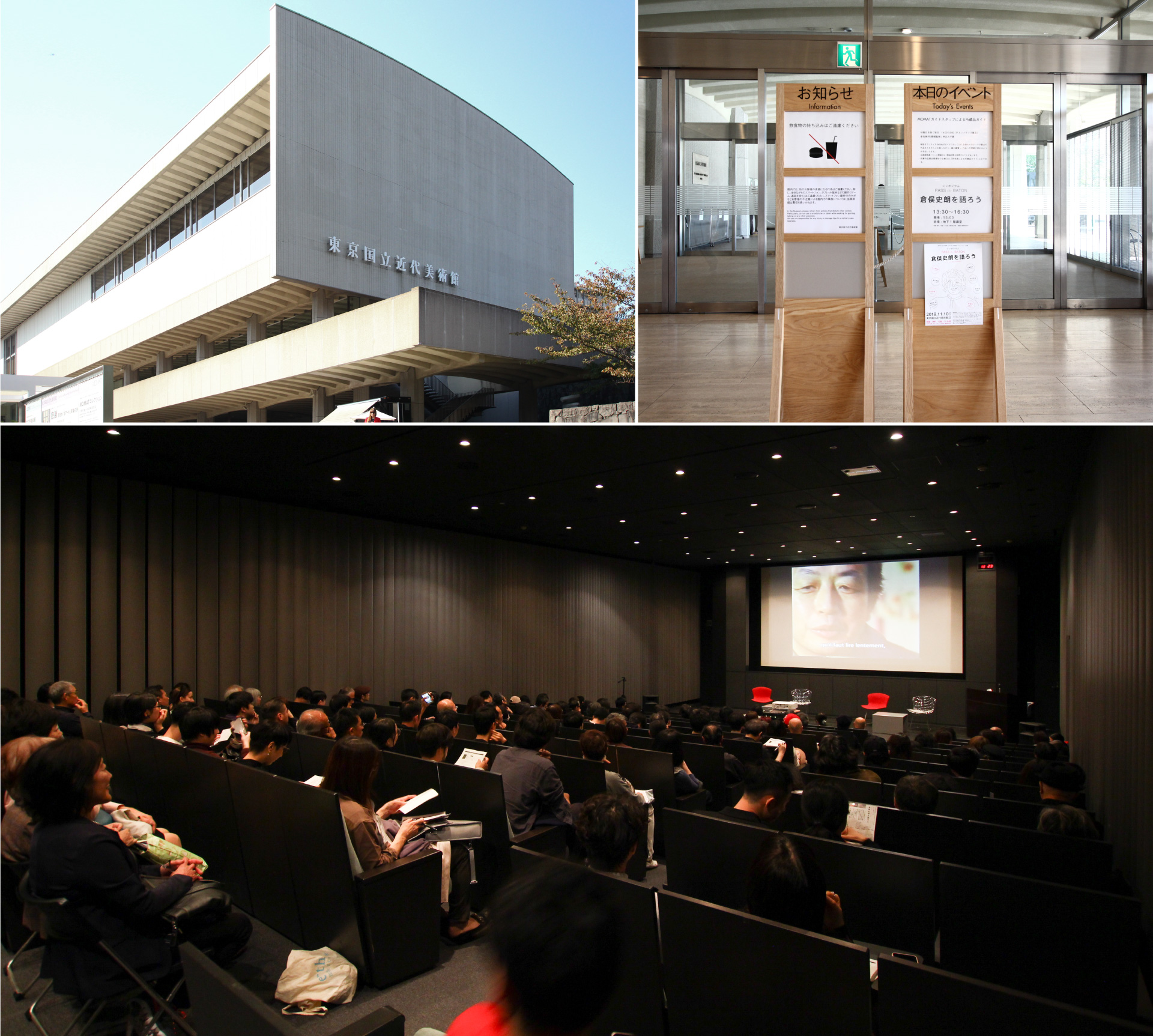
会場風景
Program.01
Lecture
"Chronicle: The Work of Shiro Kuramata
Yasuo Kondo

Yasuo Kondo, who was a staff member of the Kuramata Design Office in the late 1980s, explains Kuramata design along a time axis, especially the interior and spatial designs that are no longer extant. He explained Kuramata's works from the 60s, 70s and 80s onwards from Kondo's point of view, starting with the company housing at Riken where Kuramata lived as a child, which was shown for the first time, his post-war years of study at the Kuwasawa Design School and his journey to independence, and the art and design that became the source of Kuramata Design.
The 1960s were characterized by collaborations with artists such as Akira Uno and Tadanori Yokoo. The "Supper Club Cassador" and "Club Judd" (below), in which he collaborated with Jiro Takamatsu, were introduced as representative interior works of the 1960s. In addition to design motifs such as "drawers, stairs and clocks", which were a lifelong interest of Kuramata, the characteristic features of Kuramata design - weightlessness, the disappearance of matter, transparency, floating and the search for light - can also be seen from the 1960s.
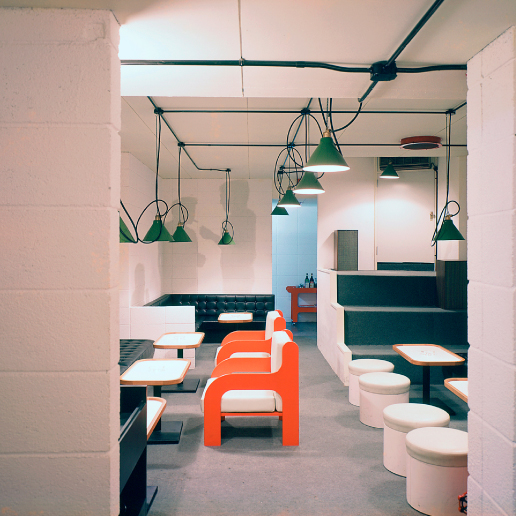
1. "Supper Club Cazador"
As Japan's economic growth settled down in the 1970s, Kuramata began to search for an intellectual minimalist design. In the process, he created some of his best-known works throughout his life, such as "Oba-Q", a lighting system that incorporated coincidence, and "Glass Chair", which pursued transparency. On the other hand, in the field of interior design, he began working on the shop design for "ISSEY MIYAKE" (below) in the mid-1970s, which he continued to work on until just before his death.
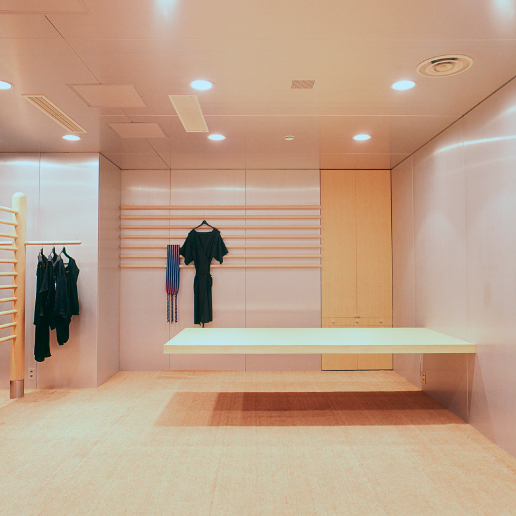
2. "ISSEY MIYAKE"
From the 1980s onwards, in 1981 Kuramata was asked by Ettore Sottsass to join the Memphis design movement in Milan, Italy. This was the beginning of a major change in Kuramata design. Kuramata broke new ground, encountering new materials such as terrazzo, cracked glass, acrylic, anodized aluminum and OSB. Kuramata's designs, such as "Miss Blanche", were unprecedented. In the interior design field, in addition to the "ISSEY MIYAKE" shop, he created "Lucchino", "Oblomov" and "Spiral". "Laputa" was his last work.

3. "Lucchino"
Program.02
Presentation
"Encounters with Shiro Kuramata
Kenjiro Hosaka / Kinya Tagawa / Tsuyoshi Tane / Naho Tamura
How do creators and curators in their 40s, who do not know Kuramata directly, encounter Kuramata's works and what do they think about them? The four gave presentations, mentioning the works they were interested in. Mr. Hosaka, a senior researcher at the National Museum of Modern Art, Tokyo, spoke about the ambiguity of art and design based on the unique worldview of Kuramata's works; Mr. Tagawa, a design engineer, spoke about the site of creation that gave birth to Kuramata's works and the way the office should be; and Mr. Tane, an architect, presented sketches and concept models rather than works. Mr. Tamura, a designer, talked about the strength of will hidden in the purity of Kuramata's works. In this way, we were able to understand each of the four designers' perspective on design.
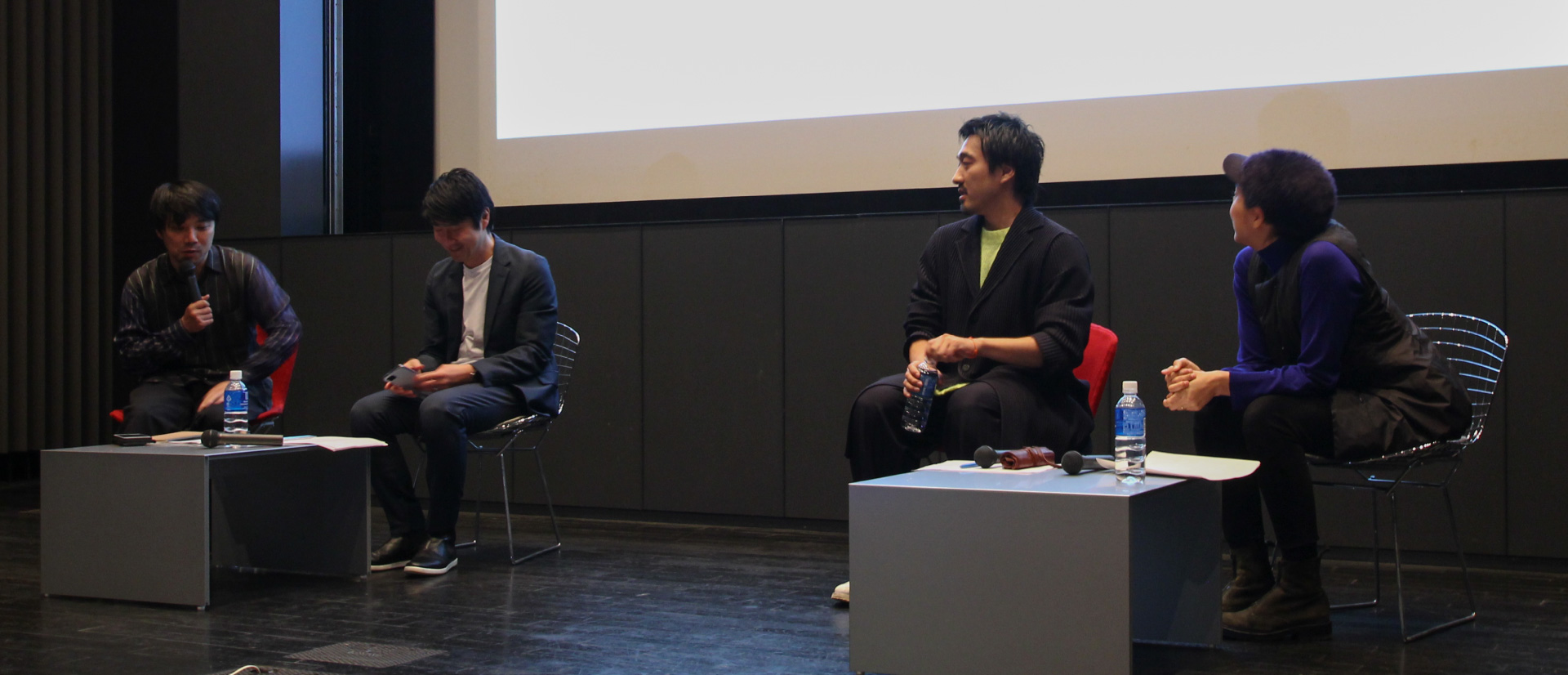
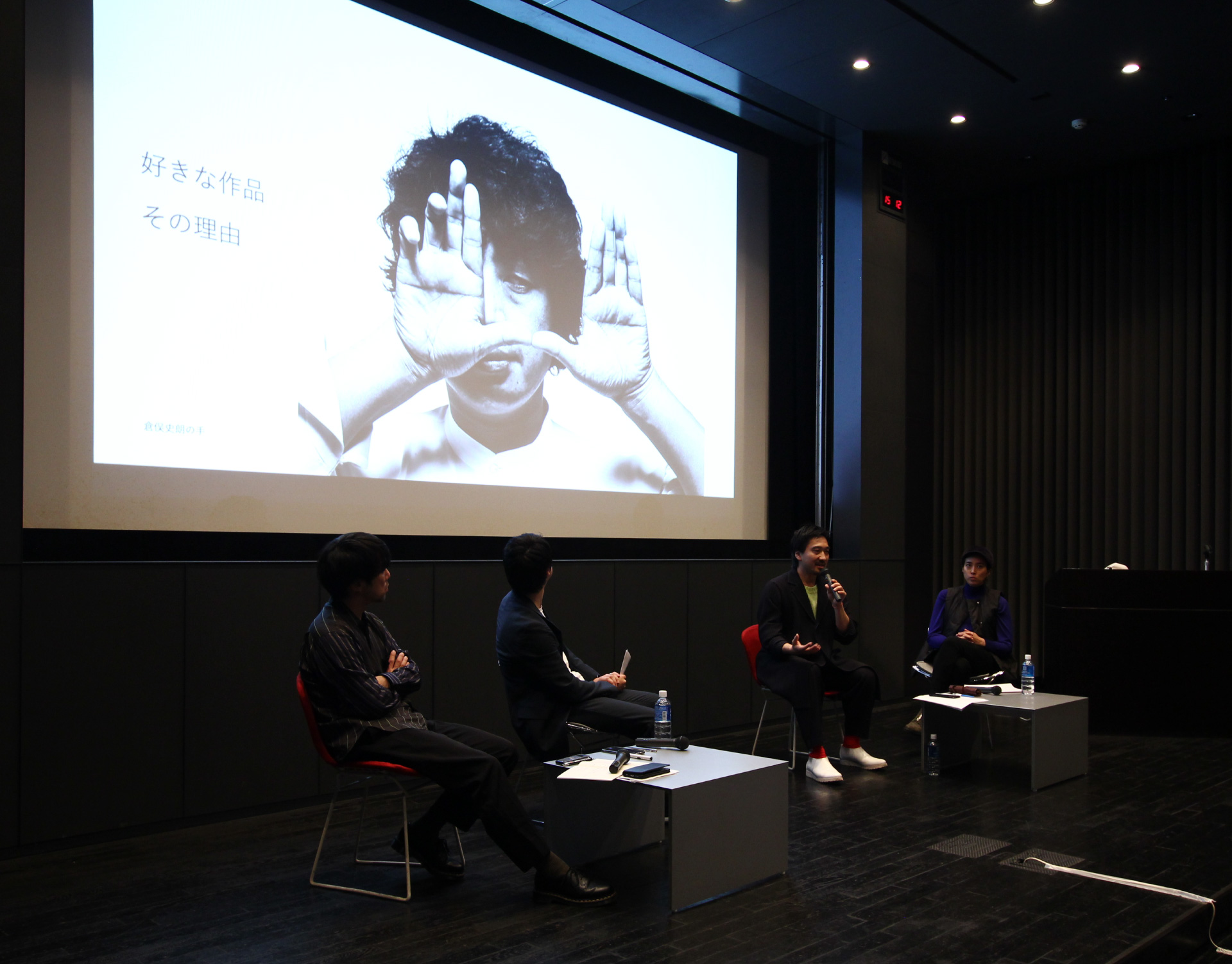
Program.03
Round Table Discussion
"Pass the Baton: Let's talk about Shiro Kuramata
Hisae Igarashi / Hideyasu Kuwayama / Kinya Tagawa / Tsuyoshi Tane / Naho Tamura / Kenjiro Hosaka
Facilitator: Yasuko Seki
The discussion was held against the backdrop of photographs of Kuramata's workplace taken before his death, which were shown for the first time to the public, with the participation of Hideyasu Kuwayama (mid-1970s) and Hisae Igarashi (mid-1980s onwards), former staff members of Kuramata Design Office and interior designers. Mr. Kuwayama talked about the episode of the birth of "Glass Chair" and Ms. Igarashi talked about Kuramata's work in his later years. The discussion then proceeded with questions from the four participants to the two former staff members. The most interesting points were about the working environment and work methods at Kuramata Design Office, where many interior designers, including Kenji Oki, Kuwayama, Kondo, Fumio Enomoto, and Igarashi, appeared, and about Kuramata's personality and humanity as expressed through his wide range of interactions with people from craftsmen to photographers, artists to entrepreneurs. and humanity.
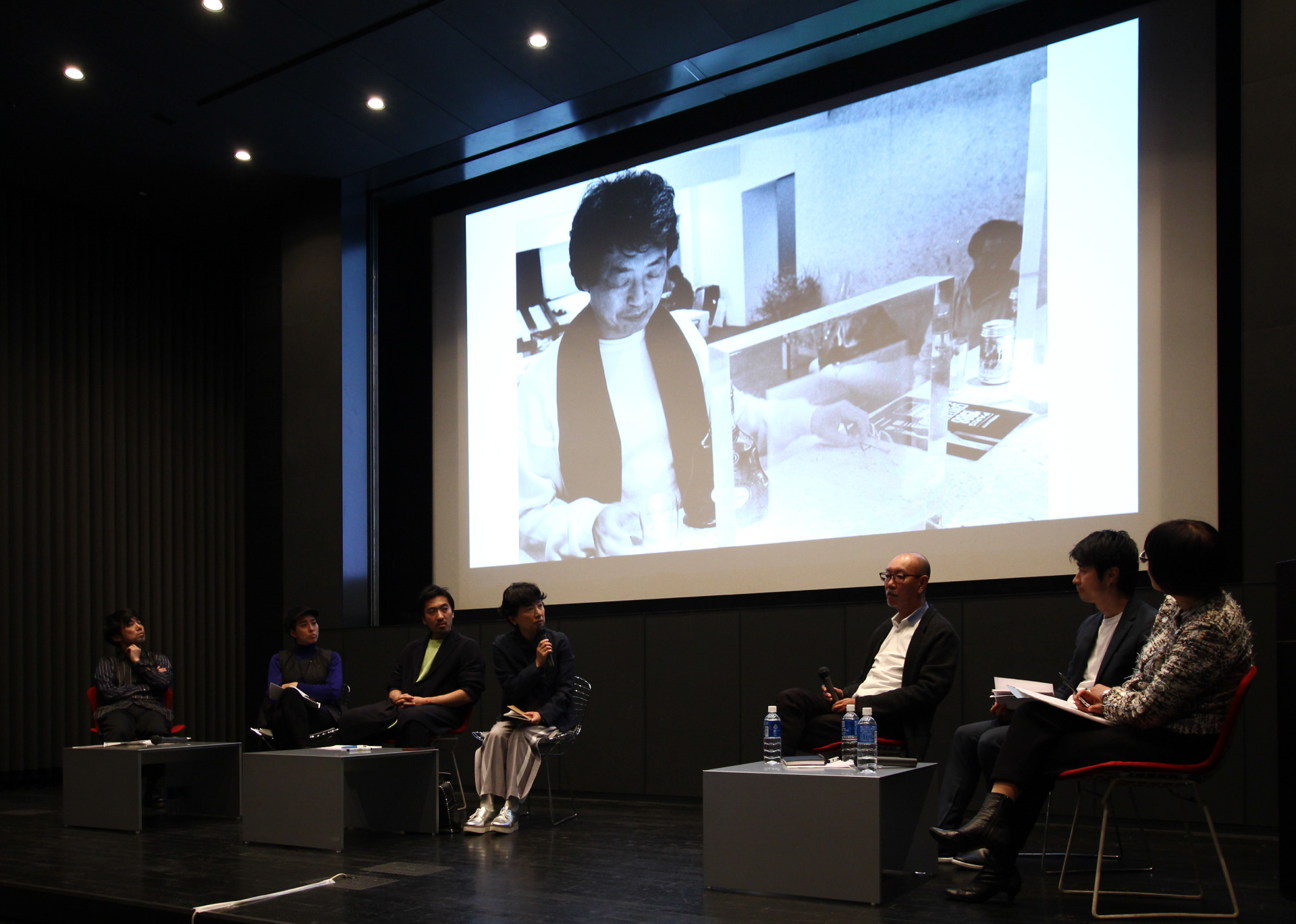
Responsibility: Yasuko Seki
Credits
Photographs by Mitsumasa Fujitsuka
Photo of the venue: Sho Imamura







